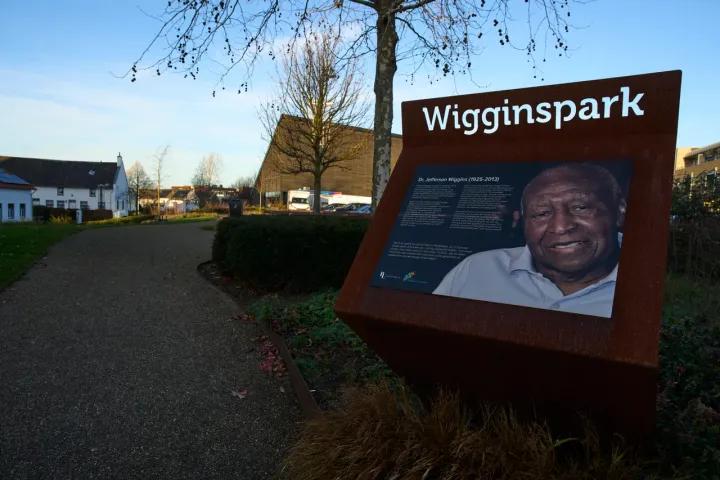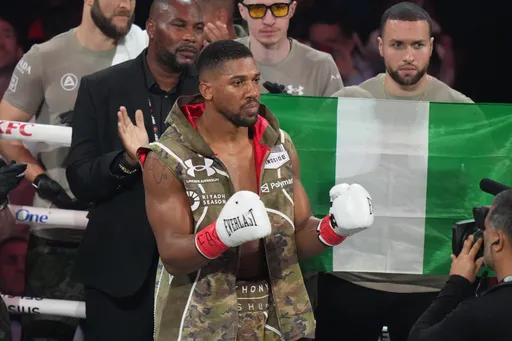By Pauline Odhiambo
Looking at Faithe Turner’s art, three things stand out – the versatility of black women, their determination to succeed against all odds and the beautiful butterfly motif marking the artists’ signature.
Many of the female subjects in Faithe’s paintings often have no eyes. This is yet another striking feature in her artwork where the few pieces that include eyes are intentionally painted closed as if to emphasise the value of inner reflection and self-acceptance.
“I only focus on lips and noses because my art is centered on black women, and those are the two features that are often ridiculed as too big or too wide,” Faithe tells TRT Afrika.
“While black women are often made to feel insecure about their features, women of other races can plump up their lips and be praised for it,” says the self-taught digital artist whose mother hails from Haiti.
“I want black women to see the beauty of their features without the distraction of the eyes.”
‘Baby hair’
Black women are known for wearing their hair in different styles, and many of Faithe’s paintings are done in apparent praise of these coiffures.
But her motivation to mostly paint black women’s features stems from a personal experience with her own daughter.
“When my daughter was about five years old, she was in a school predominantly attended by Hispanic students. She came home one day saying that she hated her curly hair, and that she wanted it to be straight like the Hispanic girls at her school,” the mother of two explains.
“We had a conversation to help her see how beautiful her own hair was, and that got me thinking about other little black girls, and grown women as well, who feel the same about their hair due to past trauma from their childhood,” says the New York-based artist.
“After that conversation there was a shift in my art where I started specially making art for black women.”
Faithe became so skilled in digitally replicating the neatness and texture of braids, weaves, locs and cornrowed hairstyles, as well the swoop of slicked-down strands of ‘baby hair’ along the hairline which often feature prominently in many black women’s hairstyles.
Colour blending
Her paintings are additionally done in rich brown shades to showcase the different skin tones of black women and their hair colour preferences.
The effect is hyperrealistic and reminiscent of the photo posters on the walls of many salons in black communities worldwide, and from which clients can choose their preferred hairstyle.
Both traditional art and digital art nonetheless require specific skill sets.
While traditional art involves a mastery of techniques like manual brush strokes and colour blending, digital art needs expert knowledge about how to use various software tools to create different effects.
Although digital art has been around for several decades since the 1960s, people often tend to question its legitimacy, according to the forum Artsper.
Like traditional art, the medium is built upon traditional art practices, such as painting, drawing, and sculpture.
But some people argue that technological tools facilitate digital painting to an extent that it becomes like cheating – a notion Faithe vehemently refutes.
“I create my art using a mouse and a (digital) brush on screen but it’s still painting. It still takes a lot of skill and it's still very difficult to do,” says the New York Art Institute graduate.
“I've gotten better over time but it can still be time-consuming specifically with the hairstyle pieces because the heads of the subjects are so small and require more detail.”
Artistic flair
Faithe initially had her heart set on becoming a fashion designer but changed course to graphic design after being advised by an academic counselor.
“I used to make clothes but I was told that I’d be suited for graphic design based on my interests,” she explains. “After graduating, I worked for a while as a graphic designer until I realised it didn’t really have the creative leeway I wanted.”
“As artists, we need the freedom to create whatever we want. That's why I decided to quit graphic design, go into art for myself,” she states.
Like many artist, Faithe’s interest in the arts began in childhood.
“I still have books full of the many drawings I did as kid from kindergarten upwards. I've been drawing my whole life,” she says. “Even then, I mostly drew anything to do with women and fashion.”
Her artistic flair was always revealed even in the various jobs she has had before becoming a full-time artist.
“I worked as teacher for a while and would always create art for various school activities. My colleagues would always ask why I wasn’t doing art professionally. I guess deep down I have always been an artist but didn’t really take it seriously.”
Leap of faith
It took a health scare for Faithe to finally take her art seriously.
“My father suffered five strokes which saw him in and out of the hospital. That really set me on a downward spiral, and through that pain of seeing him suffering, I started to create art,” she narrates. “I got really good feedback when I posted the art on social media and that encouraged me to start my own business.”
Her brand ‘Faithe with an E’ was birthed in 2019.
She now works full-time making merchandise like journals, t-shirts, digital planners, stickers, canvas prints, posters and wallpaper art.
Many of these items have positive affirmations and feature her butterfly signature.
“Butterflies represent resilience and growth,” she tells TRT Afrika.
“Like many other people, I've been through a lot of things that I've had to fight through, and so that signature is a reminder that just like the butterfly emerges from a caterpillar, beautiful things can also come from hard times.”
➤ Click here to follow our WhatsApp channel for more stories.
























